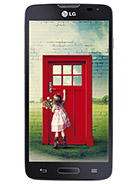GSMArena smartphone buyer's guide: February 2015
February 2015
€100-€200
The €100-€200 segment is really split in two. The first half improves on the offerings from the previous chapter, but still leaves a few complaints. At €150 and up we fully cover the needs of a casual user who's not after supersized screens.
Countries with developed LTE networks typically have affordable data plans too, so a 4G-enabled smartphone can help your browsing and tethering experience. For browsing on the phone this chapter offers a good selection of sharp screens and a couple of phablets too.
The Huawei Ascend Y550 is not far above the €100 mark but it runs Android 4.4 KitKat on a quad-core processor with 64-bit Cortex-A53 cores. Its 5MP camera shoots 720p videos, there's a passable 2MP selfie camera and the 4.5" screen is an IPS LCD. Even better, the phone is one of the cheapest LTE-enabled handsets around.
Keep in mind that Android 4.4 is not optimized for 64-bit (5.0 is), but the Cortex-A53 offers some performance advantage over the old A7, while the Adreno 306 GPU uses less power to do the same work as the 305. So even if the Ascend Y550 never gets Lollipop, the Snapdragon 410 chipset is an advantage over Snapdragon 400 devices.
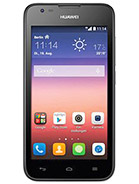 Huawei Ascend Y550 |
Pros | Cons |
|
|
|
The Microsoft Lumia 535 is going to get updated to Windows 10 problem-free (it has 1GB of RAM and 8GB of storage, just like the other Microsoft Lumias). It has the biggest screen of the Lumia entry level and though it's not very sharp, it's an LCD IPS for good viewing angles and protected by Gorilla Glass 3. Still, we've seen much better screens, so you might want to double check it in a brick-and-mortar store if you are after it specifically for the big screen.
The 5MP selfie camera was a big source of pride for Microsoft, though the 5MP main camera is capped at 480p video, which isn't great at over €100.
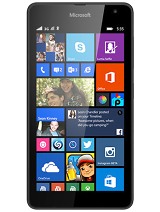 Microsoft Lumia 535 |
Pros | Cons |
|
|
|
| Review | ||
The Nokia Lumia 635 is more compact (4.5" screen) and has both 720p video capture and LTE. No selfie camera though, none at all. Also with 512MB RAM, it may face a somewhat limited feature set when it comes time for its Windows 10 update.
Anyway, you should also consider the Lumia 630 Dual SIM as the major difference between the two is the presence of LTE - it's a must-have for some, but doesn't matter for others.
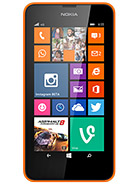 Nokia Lumia 635 |
Pros | Cons |
|
|
|
| Review | ||
The Xiaomi Redmi 1S is a very popular phone - it's one of the few handsets that can challenge the Lumias on bang for the buck. Even importing isn't much of an issue these days, you can score a Redmi 1S from Amazon UK and other online stores.
Anyway, with 720p screen on a low budget, plus an 8MP camera with 1080p video the Redmi 1S sounds great on paper. The heavily customized Android (based on Android 4.3) is not for everyone, though at least outside of China you get Google Play (not so in China).
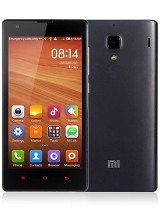 Xiaomi Redmi 1S |
Pros | Cons |
|
|
|
| Review | ||
If you prefer a more familiar brand with a traditional interface, the LG L90 offers 4.4 KitKat and a similar 8MP / 1080p camera (in some regions it's a 5MP shooter though). Anyway, the screen isn't as sharp (234ppi vs. 321ppi) and the dual-SIM version costs extra. The 2,540mAh battery is sweet though.
Last year's Motorola Moto G 4G used to be priced on par with the Moto G (2014), but it has come down in price faster. It's the more compact of the two and offers LTE connectivity and uses mostly the same setup - Android 5.0 Lollipop on a Snapdragon 400 chipset. The 5MP camera is a bit behind the newer model, but both record 720p video and we think the lack of 1080p is the more important metric.
The Redmi 1S does have 1080p video and is a dual SIM, though LTE and stock, quickly updated Android is certainly a plus.
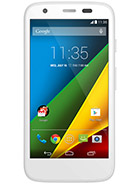 Motorola Moto G 4G |
Pros | Cons |
|
|
|
| Review | ||
The Moto G (2014) held its price better than its 4G counterpart. It has a bigger screen, 5" at 720p, surrounds it with stereo speakers and ups the still camera to 8MP. These can easily be worth the extra scratch - the stereo speakers for one are typically found on flagship phones.
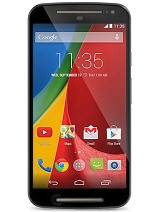 Motorola Moto G (2014) |
Pros | Cons |
|
|
|
| Review | ||
If you want a better camera, the Acer Liquid Z500 offers a 5" IPS screen with stereo speakers like the Moto G (2014), but has an 8MP main camera with 1080p video capture. Of course you'll lose the quick updates that Motorolas get, but the Liquid Z500 is a bit cheaper.
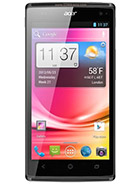 Acer Liquid Z500 |
Pros | Cons |
|
|
|
| Hands-on | ||
If you want an even bigger screen, the Xiaomi Redmi Note offers a 5.5" display with 720p resolution. It's bigger than the Redmi 1S in other ways too - it has an octa-core processor and 2GB of RAM (be careful: in some regions it's just 1GB).
It has the same 13MP/1080p camera on the back, but the selfie camera has been promoted to a 5MP shooter. The Redmi Note is a dual-SIM device like its smaller sibling to boot. The Android base is a bit older (4.2), but the MIUI software obscures most of that anyway.
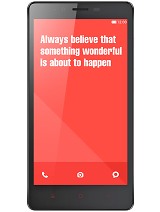 Xiaomi Redmi Note |
Pros | Cons |
|
|
|
| Review | ||
Once again, there's a more traditional alternative to the Xiaomi. The HTC Desire 816G is a dual-SIM 5.5" phablet that closely matches the Redmi Note, even has the octa-core processor and 5MP selfie camera. It adds stereo speakers and a familiar Android 4.4 KitKat (not stock, but Sense will not raise eyebrows in the west).
The Desire 816G lacks LTE, but you can just get the single-SIM Desire 816, which does have 4G connectivity.
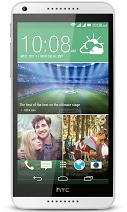 HTC Desire 816G |
Pros | Cons |
|
|
|
If you lament the death of hardware keyboards, the BlackBerry Q5 is a decent option. It can be found in the middle of the €100-€200 segment and offers a 3.1" screen and four-row QWERTY. A 5MP camera with 1080p video is pleasingly modern, contrasting with the classic looks of the device.
The BlackBerry Q5 came out second, the Q10 was the first entry in the QWERTY revival. That one is still very overpriced - nearly €100 more! - without offering much extra in terms of features.
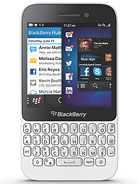 BlackBerry Q5 |
Pros | Cons |
|
|
|
| Review | ||
The Sony Xperia M2 is a fine phone, but it's the Xperia M2 Aqua that stands out. Not for its 4.8" screen with just qHD resolution (540 x 960), but for the IP68 rating. It allows it to go deeper than 1m of water and is completely dust tight.
The camera is an 8MP shooter with 1080p video capture, so you'll get good photos and videos even if you can't' fully enjoy them on the phone itself.
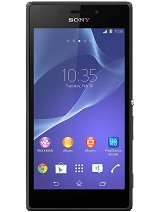 Sony Xperia M2 Aqua |
Pros | Cons |
|
|
|
| Review | ||
Reader comments
- AnonD-190634
- 09 Jun 2015
- HIk
i wish gsmarena did another after few devices came out like now! or kept updating it as new devices came out!
- Notarius
- 28 Feb 2015
- S7x
OnePlus one, 64gb version, perfect phone.
- Anonymous
- 25 Feb 2015
- Hq5
I tested my phone in water and it didn't work then Sony did not want to fix it
